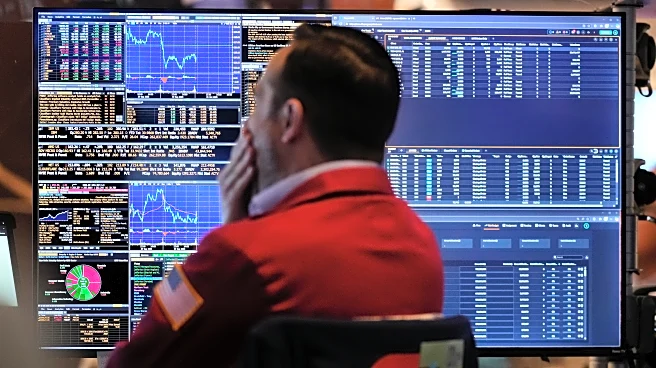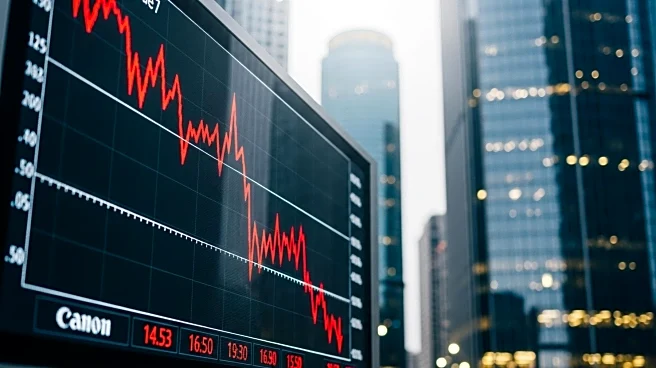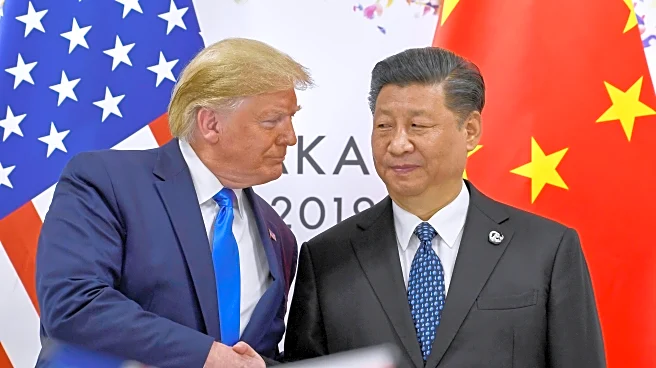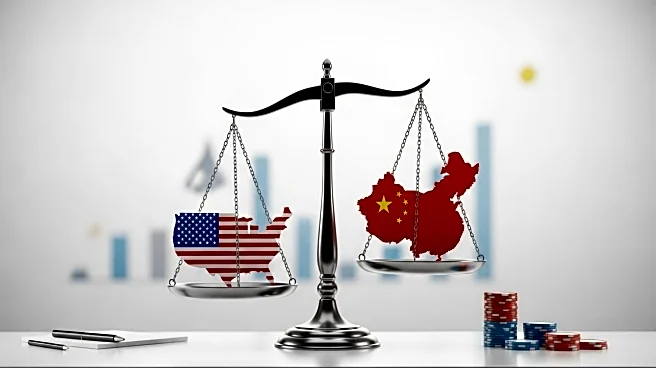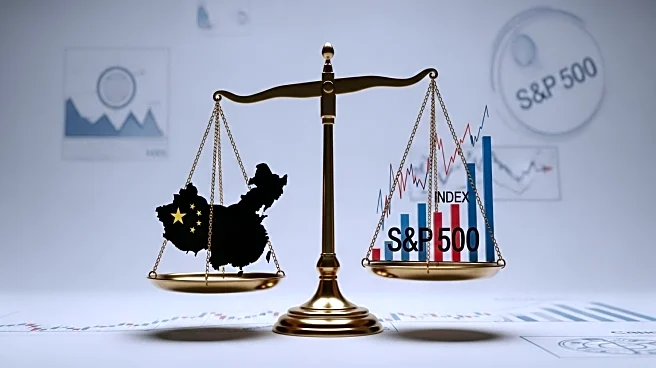What's Happening?
President Donald Trump has announced plans to impose an additional 100% tariff on imports from China starting next month. This decision follows China's recent tightening of export rules for rare earths, which are crucial components in various industries, including automotive and technology. In a social media post, Trump accused China of becoming hostile and attempting to hold the world captive through these measures. The announcement has led to a significant drop in financial markets, with the S&P 500 closing down 2.7%, marking its steepest decline since April. Additionally, China has initiated a monopoly investigation into the US tech firm Qualcomm, potentially affecting its acquisition of another chipmaker.
Why It's Important?
The imposition of additional tariffs by the United States could reignite trade tensions between the two largest economies, potentially impacting global markets and industries reliant on rare earths. US companies, particularly in the automotive and technology sectors, may face increased costs and supply chain disruptions. The investigation into Qualcomm could further strain US-China relations, affecting business operations and strategic partnerships. The financial market's reaction underscores the economic uncertainty and potential volatility resulting from these developments.
What's Next?
The US and China are expected to meet at a summit in South Korea later this month, where these issues may be addressed. Stakeholders, including political leaders and business executives, will likely monitor the situation closely, assessing the impact on trade agreements and economic policies. The potential for further negotiations or retaliatory measures remains, as both countries navigate the complexities of their trade relationship.
Beyond the Headlines
The ongoing trade tensions highlight the geopolitical dynamics between the US and China, with implications for global supply chains and economic stability. The focus on rare earths underscores the strategic importance of these materials in modern technology and manufacturing. The situation may prompt discussions on diversifying supply sources and reducing dependency on Chinese exports.



